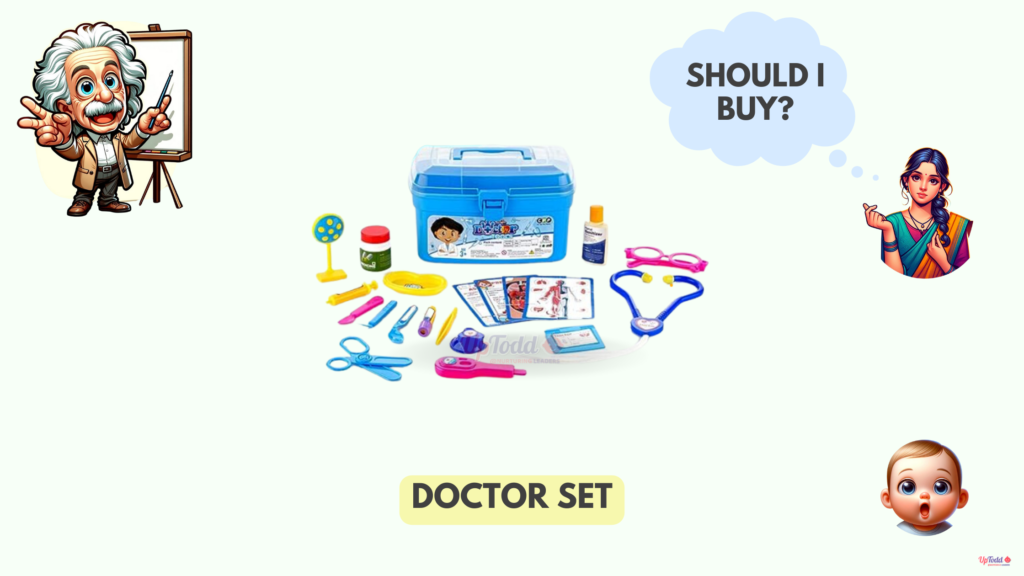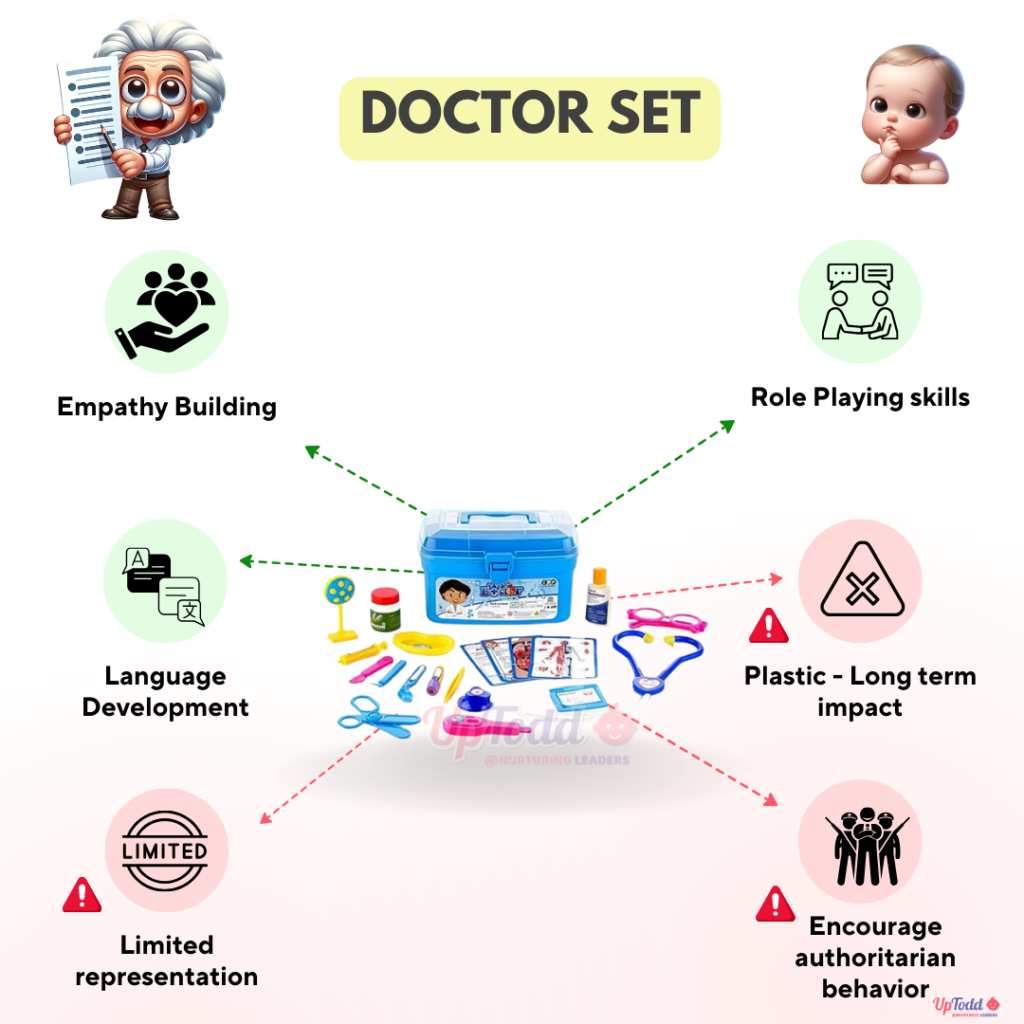
Welcome to our exploration of the Doctor Set Toy. In this blog post, we’ll delve into the world of this engaging pretend play toy, examining its benefits and potential drawbacks. Guided by the insights of the “Einstein Growth Guru,” we’ll explore the advantages and considerations associated with the Doctor Set, aiding you in making informed choices for your child’s playtime.

Pros of the Doctor Set Toy
Empathy Building
The Doctor Set Toy offers opportunities for children to develop empathy as they role-play medical scenarios. By taking on the roles of doctors, nurses, and patients, children learn to understand and empathize with others’ feelings and experiences, fostering compassion and emotional intelligence.
Role-Playing Skills
With its assortment of medical tools and accessories, the Doctor Set Toy encourages role-playing and imaginative scenarios. Children can simulate medical examinations, diagnose ailments, and administer treatments, honing their role-playing skills and expanding their understanding of different professions and roles.
Language Development
Engaging in pretend medical consultations and discussions enhances language development in children. Through dialogue and communication during role-play, children practice vocabulary related to medical terms, symptoms, and procedures, expanding their language skills and communication abilities.
Cons of the Doctor Set Toy
Limited Representation
One potential drawback of this toy is its limited representation of medical roles and scenarios. While the set may include basic medical tools and accessories, it may not accurately reflect the diverse range of healthcare professions and experiences. Caregivers should supplement play with additional resources to provide a more comprehensive understanding of the medical field.
Plastic – Long-term Impact
Many Doctor Set Toys are constructed from plastic materials, which may have long-term environmental impacts. While plastic toys are durable and affordable, they contribute to plastic waste accumulation and may contain harmful chemicals. Caregivers should consider alternatives made from sustainable materials to minimize environmental impact.
Encourages Authoritarian Behavior
In some instances, role-playing with this toy set may inadvertently reinforce authoritarian behavior, particularly if children adopt rigid doctor-patient dynamics. Caregivers should encourage cooperative and collaborative play, emphasizing the importance of empathy, communication, and mutual respect in medical interactions.
Age Recommendations
Recommended for children aged 3 to 6 years, the Doctor Set is typically made from safe, non-toxic materials such as plastic or wood. Caregivers should ensure the toy meets safety standards and inspect it regularly for signs of wear or damage.
Final Thoughts by Einsteing Growth GURU
In conclusion, the Doctor Set Toy offers valuable opportunities for empathy building, role-playing skills development, and language enhancement. Despite its benefits, caregivers should be mindful of potential drawbacks, including limited representation, environmental concerns associated with plastic construction, and the risk of reinforcing authoritarian behavior. By understanding both the pros and cons of the this toy, parents can provide enriching play experiences that support their child’s holistic development.
Thank you for joining us on this exploration of the Doctor Set Toy. May your child’s playtime be filled with empathy, creativity, and endless opportunities for growth and discovery!
Explore UpTodd luminary pathway to unleash hidden abilities of the baby
